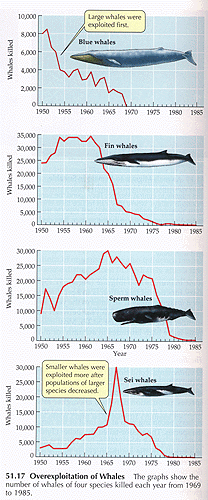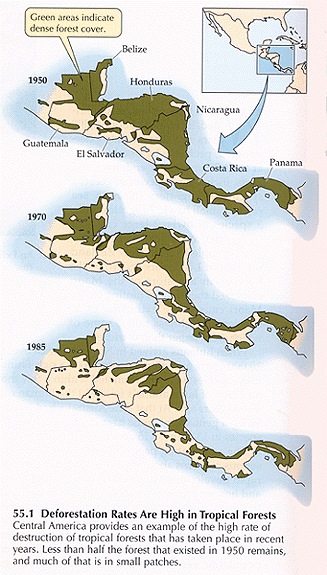Patterns of Diversity in Space
Fact: There are about 1.9 million species described on Earth .
Fact: Half of the described living organisms are arthropods (insects, spiders, mites, crustaceans).
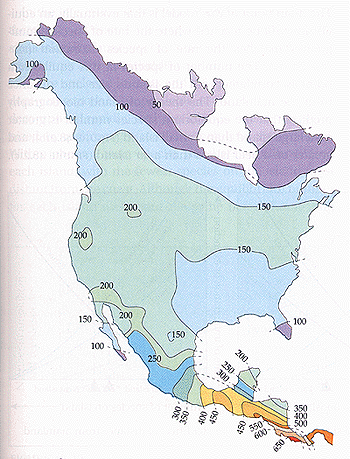
Diversity gradient in birds on the North American continent.
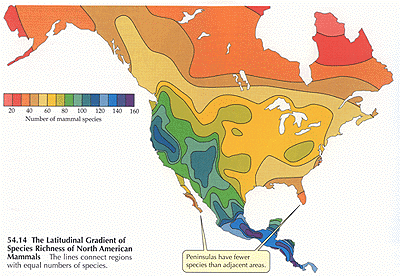
Diversity gradient of North American mammals.
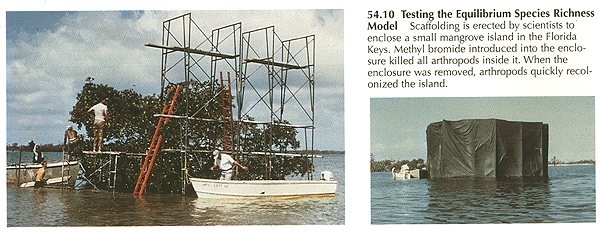
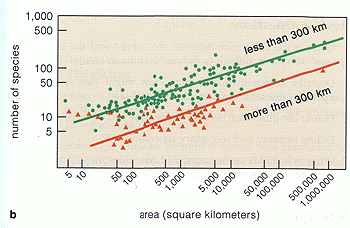
The effect of distance on species diversity on islands. Here numbers of bird species on tropical islands are shown as a function of distance from the mainland.
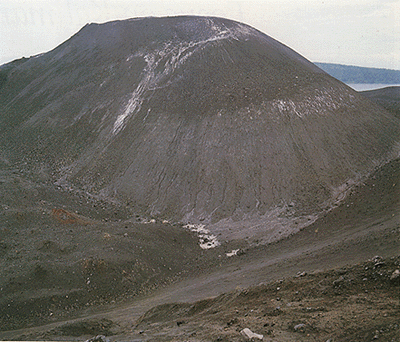 -
-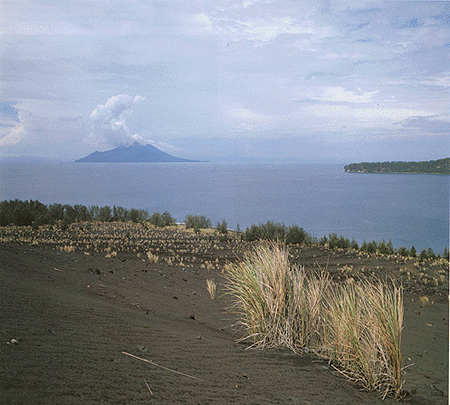
Views of the remnants of the island Krakatau a hundread years after its explosion.
Biomes
Back to Part I.: Ecology
Changes in patterns of diversity over time: Succession
Succession: The predictable series of species replacements over time.
Fact: Primary succession occurs previously uninhabited areas with no soil. It is much slower than secondary succession.
Fact: Secondary succession occurs where there is developed soil on the ground. It is much faster than primary succession.
Fact: The climax community remains essentially the same over time until the climate has not changed.
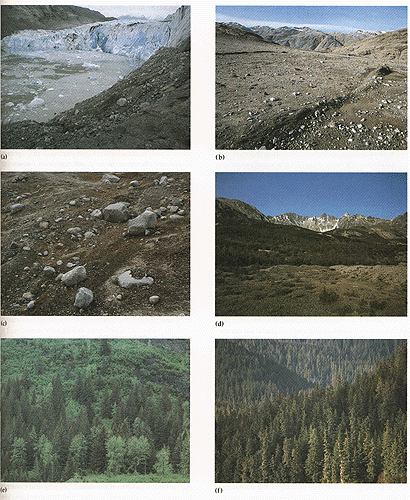
Primary succession following the retreat of a glacier.
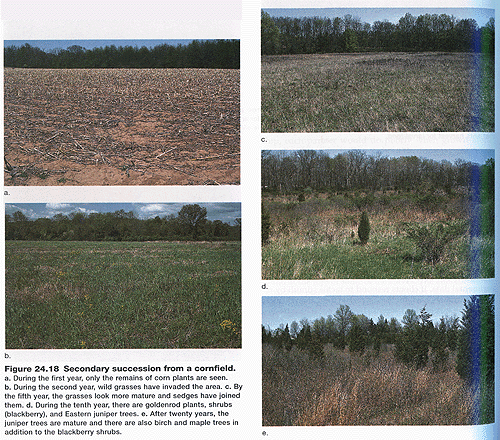
Secondary succession on an abandoned cornfield.
![]()
Primary succession of a small lake on the shore of Lake Ontario.
Back to Part I.: Ecology
Ecosystems
Ecosystems: Groups of organisms that are interconnected by energy and mineral flow.
Fact: only 1% of the sun's energy is captured by plants.
Fact: Only about 1/6 of the energy content of one trophic level is transferred to the next one. The rest is lost as respiratory heat.
Fact: A cornfield captures about 1.6 % of the incoming light energy.
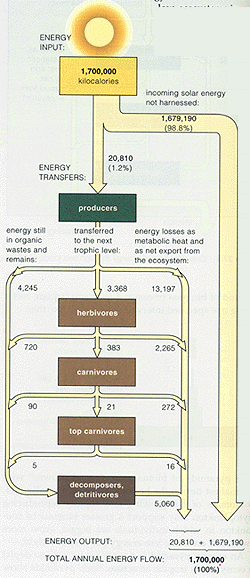
Energy acquisition: Optimal foraging (see handling time)
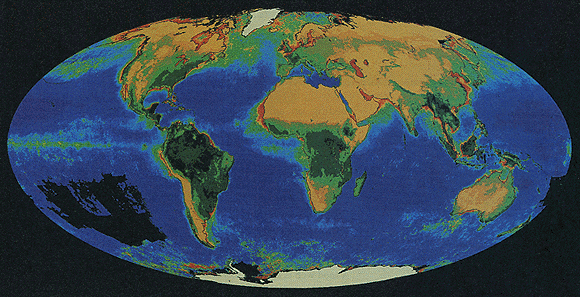
Satellite image of the Earth's primary productivity. Dark green denotes highly productive areas, whereas yellow are areas with low productivity. For oceans, productivity decreases from red through yellow, green and blue.
Mineral cycles: Nitrogen, Carbon, Phosphorous
See your textbook!
Pollution in the environment
Fact: the time for 95 % breakdown for DDT in the environment is 10 years.
Fact: Only substances that are not metabolized can be biomagnified.
Fact: Skin cancer rates have increased over the past decade on the southern hemisphere due to increased UV irradiation caused by the thinning of the ozone layer in the stratosphere.
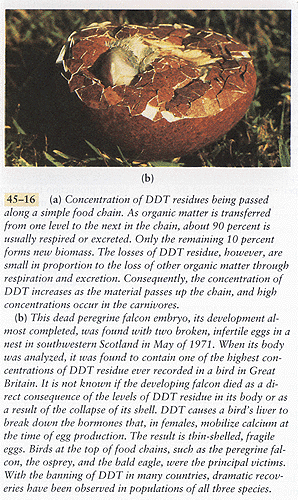

Early days of the DDT era. 1945, New York, Jones Beach State Park: mosquito control.
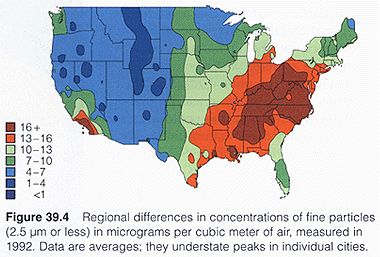
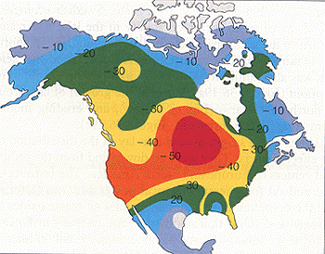
Predicted per cent soil moisture loss in North America by the years between 2025 and 2075 if atmospheric carbon dioxide levels double in the next decades.
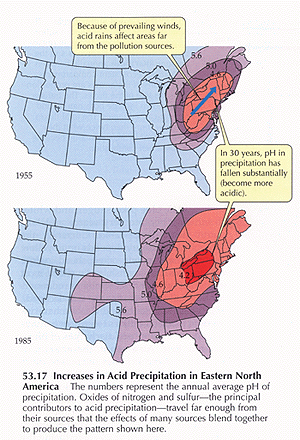

Acid rain severely damages limestone objects, such as this statue on the Rheims Cathedral, France.
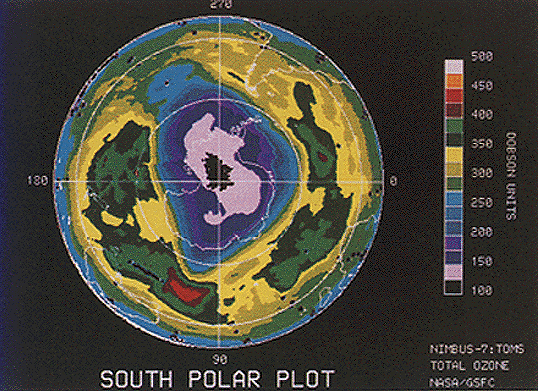
False-colored satellite image of the ozone hole above Antarctica.
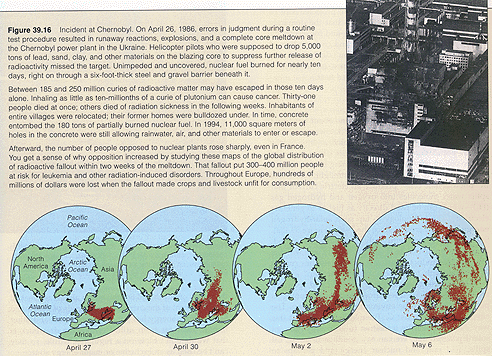
Overexploitation of Resources
Overexploitation of natural resources poses severe threat to natural ecosystems, such as changing the pattern of energy flow and mineral cycles (eutrophication, catastrophic extinctions, changes in climatic patterns, etc.).
Back to Part I.: Ecology




 -
-












